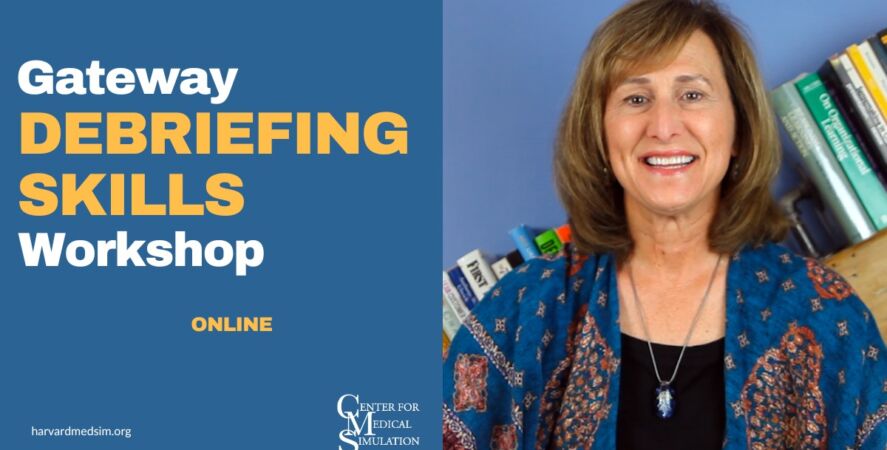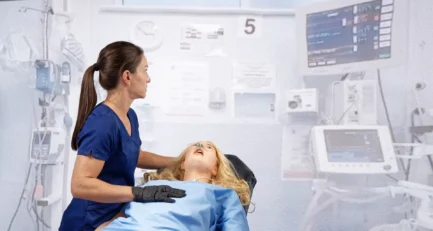
Questions for the CMS advice column? Send them to info@harvardmedsim.org!
Q: I work in a school of pharmacy and was recently named the Simulation Director with 50% of my time devoted to developing the simulation program. I have about three years of experience using simulation, and took a simulation instructor training course. It’s now my responsibility to get simulation integrated into ALL the courses, and get the faculty up to speed on facilitation.
I hardly know where to start! How do I teach all the other faculty when I’m pretty new myself? Do I start by picking one method of debriefing? Do I let people do what they want? How involved do I get in the decisions they make for the simulation(s) in their courses?
A: First, take a deep breath… OK, exhale slowwwwwwwly… Feel better? OK, let’s talk.
First of all, congratulations on your new position! I can tell from your questions that they put the right person in that job; you are asking all the right stuff. So let’s put faculty development highest on your list, as that’s what seems most important to you.
I’d think about it in terms of short term and long term plans.
Short term, the most important thing is that no student be harmed by simulation! By that, I mean that attention to creating the right learning environment is key. Learners are uniquely vulnerable in the simulation lab, as we ask them to immerse themselves in an artificial environment that they know we created in order to challenge them. During that immersion, we’re going to be behind a one-way mirror taking notes on what they’re doing. Then, finally, we’re going to take them to a room and pry into their minds to try to understand their thoughts as they were making critical decisions. Learners will not participate fully unless they feel safe from humiliation. So that is where you begin – by learning all you can about psychological safety and how it impacts experiential learning and debriefing. Then, you help your faculty understand 1) its importance to learning and 2) how to create a safe learning environment.
This territory covers the actions faculty take (or don’t take) from prebriefing through the end of debriefing, which is a lot! To break it down a bit, let’s say that you attack in this order
Introduce the idea of the Basic Assumption (aspirational at this point for many, but many others will grasp it immediately).
Discuss the elements of prebriefing to be included; maybe script a somewhat standardized one (Element 1 of the DASH very helpful here). Help other faculty with simulation design as needed to ensure that simulations are based on an identified need, are developmentally appropriate, and have clear learning objectives.
It would be great if all faculty could initially structure a 3-phase debriefing:
i. Reactions: Feelings & Facts
ii. Understanding: analysis; most of the debriefing time here
iii. Summary
Improve feedback skills – using Preview/I saw/I think/I wonder/Listen
Longer term, you could think about standardizing the debriefing method used. Consistent approaches to debriefing can be helpful to learners as they begin to build their reflective learning skills in a consistent way.
Integrating simulation throughout the curriculum is a long term project. To get started, you may want to consider individual meetings with each course director to understand their needs and interests: how do they see simulation fitting in? What course outcomes are not being met well with the current didactic and clinical experiences — and can simulation fill in?
You’ve got a lot on your plate, but hopefully this gives you some footing to start with!
-Mary Fey, Associate Director, Applied Learning for Performance and Safety
Resources:
Rudolph, J.W., Simon, R., Dufresne, R.L. and Raemer, D.B., 2006. There’s no such thing as “nonjudgmental” debriefing: a theory and method for debriefing with good judgment. Simulation in Healthcare, 1(1), pp.49-55.
Rudolph, J.W., Raemer, D.B. and Simon, R., 2014. Establishing a safe container for learning in simulation: the role of the presimulation briefing. Simulation in Healthcare, 9(6), pp.339-349.
Debriefing Assessment for Simulation in Healthcare (DASH) Instrument resources: https://harvardmedsim.org/debriefing-assesment-simulation-healthcare.php
Boud, D. and Molloy, E., 2013. Feedback in higher and professional education: understanding it and doing it well. Routledge.
Kern, D.E., 1998. Curriculum development for medical education: a six-step approach. JHU Press.

